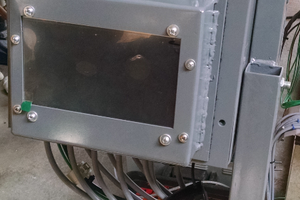I started designing this 200kg beast in 2010, 2 years and 900+ revisions later and it was ready to decide if it would make it into the real world.
Unfortunately, this coincided with a couple of business trips to China... so the first constraint was no longer that it had to fit through a standard doorway, but what's the longest profiled rail I can get into my luggage?
Fast forward to boxing day 2012, the frame is built, painted, but not a whiff of electrical progress or cable. Meanwhile a friend who had been helping out with some milling of the Z axis had mentioned the project at his local model engineering club who in turn had a stand at the prestigious Model Engineering Exhibition at Alexander Palace in London. It had been suggested that I turn up with the CNC and ruffle the feathers at the showcase of real model engineering. :-) Anyway, back to Boxing day. I ring my buddy and ask what are the dates for the show, March wasn't it?
er, no, comes the reply, January 12th; (It probably wasn't the 12th but I didn't hear anything after JANUARY!)
 Crum3le
Crum3le

 dekutree64
dekutree64
 Greg Duckworth
Greg Duckworth

 willbaden
willbaden
Thanks for your interest and for looking at this project. At the shows where I've taken it to demo, one of the questions asked is how accurate is it? Well, according to the spreadsheet its good for 5 microns and that's tool tip deflection. :-) I've no way of measuring 5 microns and I dont know that the CNC has read and understood the spreadsheet. However, it's certainly capable of getting to any accuracy I've needed so far. Lithophanes look very crisp from it.